
Background information
The invisible indispensables
by Michael Restin

Yeah, Coca-Cola used to contain cocaine. No, it doesn't anymore. The Coca-Cola Company has put a lot of resources into you not finding this out. Let’s take a look back into a clash of cultures, race, religion, drugs and innovation.
There's cocaine in Coca-Cola. Many a Swiss has already heard this myth. Depending on whom you believe, the cocaine is still present, but «They» – with a capital T, of course – don't want you to know. Either that, or the iconic soft drink used to contain the drug, but not anymore. Even the website Snopes, which does nothing more than follow up on rumours and check them for authenticity, is clearly somewhat «divided» on the topic.
But author Mark Pendergrast knows the truth. In his book «For God, Country & Coca-Cola: The Definitive History of the Great American Soft Drink and the Company That Makes It» he provides proof.
Yes, there used to be cocaine in Coca-Cola.
No, it's not there anymore.
If the cocaine were still there, the drink would be way pricier than your average line of cocaine.
According to Pendergrast, the reason why you don't know anything about it or why the topic isn't dealt with openly is that «The Coca-Cola Company» likes to embellish its own history a bit. The federal government doesn't tend to view hard drugs in soft drinks nicely, which is why the company likes to keep this aspect of its history quiet.
Pendergrast, however, claims ownership of an original Coca-Cola recipe. Or at least a predecessor. After all, Coca-Cola's history with drugs goes way back. To even before the first glass of Coke ever poured from a soda fountain in Atlanta.
Coca-Cola was founded in the 1880s. A time when people were very interested in healthy drinks. If you needed a tonic for your ailment, you could buy one from your local crafty businessman. Headache? Tonic. Sore throat? Different tonic. AIDS? Wasn't around at that time, but even if it had been, there would certainly have been some snake oil salesman ready to rip you off.
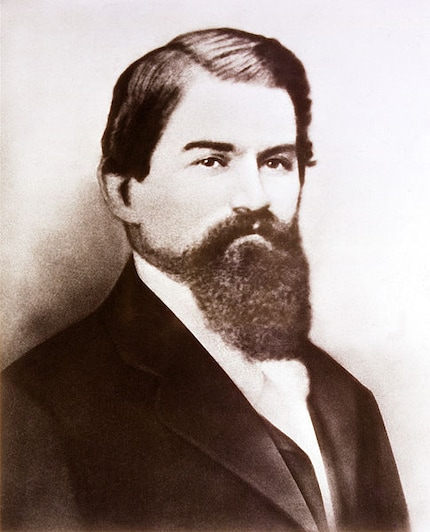
The Temperance movement was on everyone's lips and widely supported by legislators. The movement wanted to ban alcohol, claiming it was the origin of all sin. In 1886, Atlanta either banned alcohol altogether or severely restricted its sale. Since many tonics were based on alcohol, a solution was needed. John Stith Pemberton, chemist and morphine addict, jumped on this idea.
To add another dimension to the historical context of Coca-Cola's invention: cocaine and other hard drugs weren't illegal at the time. A rather important footnote we need to remember when talking about this topic. In 1886, there were all kinds of products that openly advertised their cocaine content.
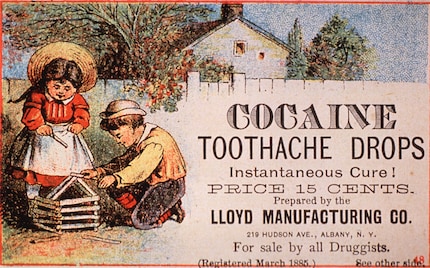
Pemberton had made a small fortune by brewing and selling a drink called French Wine Coca. Since the drink contained wine in addition to an extract of the Coca leaf, he had to change his recipe. So he replaced the wine with Cola nut extract and, since alliterations were fashionable, he christened his new brew Coca-Cola and adapted his recipe for French Wine Coca. Coca-Cola was born. With cocaine in it. However, we shouldn't ask «Did it contain cocaine?», but «How much cocaine was really in Coca-Cola?» and maybe also «Could I get high off it?»
The amount of cocaine in Coca-Cola has always been the subject of controversy. The most reliable figures come from the recipe for French Wine Coca.
It states that ten pounds of coca leaves should be soaked in three gallons of water. So 4,536 kilograms of leaves in 11,356 litres of water.
The concentrate recipe for Coca-Cola states that for 36 gallons of concentrate, 15 quarts of coca extract should be used. Converted into metric units, that's 14.20 litres of extract for 136.27 litres of concentrate. If the extract was prepared using the same method as the extract in French Wine Coca, then 12.5 pounds of coca leaves would be needed for this amount of concentrate, i.e. 5.67 kg. Pendergrast refers to an 1887 article written by E. R. Squibb – predecessor of the pharmaceutical company Bristol-Myers Squibb. According to him, a coca leaf consisted of 0.35 percent cocaine.
Time for some quick maths. So for every 136.27 litres of concentrate, there are 19,845 grams of cocaine.
A glass of Coca-Cola, which you could buy at the Soda Fountains at that time, had one liquid ounce of concentrate according to the recipe. That's 29.57 millilitres. With this, we can calculate how much cocaine was in a glass of Coca-Cola according to the original recipe.
Per glass of Coca-Cola, a soda drinker consumed about 4.3 milligrams of cocaine. That's a comparatively small amount of cocaine, but when you combine cocaine with caffeine, the effect is enhanced.
When Pemberton introduced coca leaf extract into his Coca-Cola, he didn't have a really detailed plan on how to get fame and fortune from his drink. A man named Asa Candler came up with it instead. Candler made Coca-Cola the global phenomenon we know today. The deeply religious and tiny man was a tough businessman with a vision. He was aware early on that marketing is decisive. The Cola logo was already everywhere in the late 19th century.
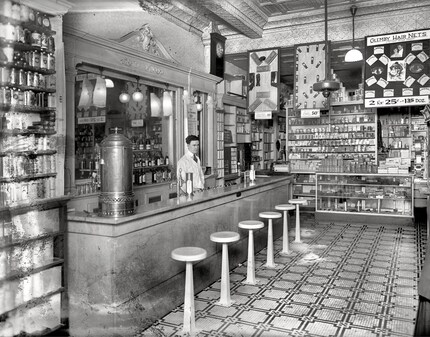
Candler, however, made one crucial mistake. He knew exactly how he wanted to provide his customers with Coke. Candler's company would brew the concentrate at the factory and send it to Soda Fountains in barrels. There were bars in drugstores, where a bartender served drinks. He conjured up sparkling drinks out of concentrates – from fruit juices to mixed drinks – and carbonated water. According to Pendergrast, the largest of these soda fountains had up to 500 concentrates ready to go. Candler had it figured out: Coca-Cola was a soda fountain drink.
But on July 21 1899, Candler made a fatal mistake. He gave Benjamin Franklin Thomas, lawyer and businessman, and Joseph Brown Whitehead, also a lawyer, permission to bottle and sell Coca-Cola. On the condition that Candler's drink wouldn't lose its fizz and refreshing taste. Candler never really believed in bottling. The contract is extremely sloppy, has no end date and gives Whitehead and Thomas a lot of leeway.
Coca-Cola becomes accessible to everyone. After all, while Americans in 1900 had no problems with cocaine, the same didn't apply to people of colour. They were denied access to soda fountains, just like poorer people and those who lived outside the big cities.
Since financially well-off Whites are historically a minority in cities, there were quite a few people who suddenly had access to Coca-Cola thanks to bottling. This included African Americans. It didn't take long before the media published sensationalist stories about «Negro Coke Fiends». This spectre of the drug-addicted black man had its place in American media until the First World War.
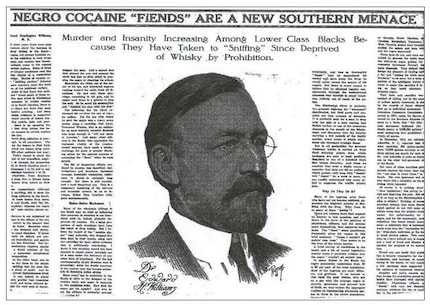
Negro Cocaine «Fiends» Are a New Southern Menace: Murder and Insanity Increasing Among Lower Class Blacks Because They Have Taken to «Sniffing» Since Deprived of Whisky by Prohibition.
This conspiracy could have contained a tiny kernel of truth. Many farmers bought cocaine instead of food for their Black farm «employees». It was cheaper. In the cities, cocaine was cheaper than alcohol. 50 cents was enough for a weekly ration. Hordes of wild Blacks, high on cocaine, who attacked and raped well-behaved white women aren't historically documented. Nor are the Coke Fiends who attacked their innocent White bosses.
But everyone agreed. It wasn't the white farmers who fed their indentured servants cocaine that were to blame for a few individual cases. It was bottled Coca-Cola. Racist America was sure: it was Black people. Clearly. But Coca-Cola wasn't innocent either, even if a white Christian was behind the company.
Reverend Lindsay moved from Oregon to Atlanta in 1898 and took over a Baptist congregation there. A recurring element of his sermons was Coca-Cola. «Coca-Cola is two-thirds pure cocaine,» he is said to have raved from the altar. If one of his sheep drank Coca-Cola, they would soon be «eating Morphine».
Asa Candler and the still young «The Coca-Cola Company» – always containing «The» and a hyphen – were under pressure. The Reverend's fiery sermons started selling out the newspapers they were printed in. Asa Candler, himself deeply religious, was sure that he wasn't harming humanity: «I would never suggest selling something or help sell it if I knew it would harm anyone».
Nevertheless: there were apparently wild Blacks rioting in the streets, and religion had turned on Canzler's life's work. Racism was becoming socially acceptable in the USA. In 1906, a racially motivated uprising took place in Atlanta – the hometown of Coca-Cola. It wasn't black people who were rioting, but Whites attacking Blacks instead. But in the end, the latter once again took the blame. As well as cocaine.
Use of the drug among negroes is growing to an alarming extent. . . It is stated that quite a number of the soft drinks dispensed at soda fountains contain cocaine, and that these drinks serve to unconsciously cultivate the habit.
Asa Candler had to explain himself to a judge.
«There's a very small amount of cocaine in Coca-Cola,» he admits.
In 1901, he's faced with an overwhelming decision. A doctor from Atlanta claimed that a thirteen-year-old was drinking between 10 and 20 glasses of Coca-Cola a day, and had subsequently lost his job and could no longer afford the drink. He had been «very nervous and almost collapsed» while in his practice. The boy didn't have his Coca-Cola, he knew something was wrong with him. Another doctor reported a colleague with weak nerves who couldn't find his way home after a glass of Coca-Cola.
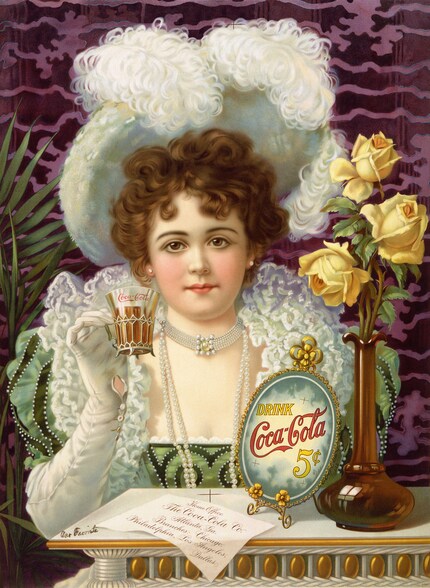
At a usual concentration, the boy would have ingested 43 to 86 milligrams of cocaine. But in Atlanta, not all soda fountain operators followed The Coca-Cola Company's guidelines. According to tradition, they used up to four times as much concentrate in a glass of Coca-Cola. That would be 172 to 344 milligrams of cocaine a day.
The pressure on Candler and his drink became too much, and he removed most of the cocaine from the formula. But there was still a small remainder. Nevertheless, «The Coca-Cola Company» published a pamphlet saying that it would take «about 30 glasses of Coca-Cola» to make «a normal dose of the drug». According to these calculations, a normal dose would be about 129 milligrams of cocaine.
A year later, in 1902, Candler was on trial again. Cocaine, again. Racism, again. Black people are still drinking Coca-Cola from the bottle. The otherwise eloquent Candler himself stumbles over his own words at this trial. They say he has a splitting headache. Candler, who likes to drink Coca-Cola himself, is probably suffering from cold turkey withdrawal.
Then in 1903, Candler gets serious. The Schaefer Alkaloid Works in Maywood, New Jersey, are to «decocaine» the coca leaves before they are used in Coca-Cola. The Schaefer Alkaloid Works has become the Stepan Company. The company safely decocained coca leaves for «The Coca-Cola Company» until 1988. To this day, coca leaf extract is still in Coca-Cola. The Stepan Company is the only company in the USA that has permission to import coca leaves. Up to 100 tons of leaves are processed annually in Maywood for «The Coca-Cola Company». According to the New York Times, Stepan sells the extracted cocaine to Mallinckrodt Pharmaceuticals. Mallinckrodt uses it to make cocaine hydrochloride, a medically prescribed anaesthetic for eyes and ears.
In the wake of this scandal, Candler faces a new challenge. If cocaine is bad for you, that means he's been selling something bad to women and children for years. And, even worse, is he perhaps to blame for the wild Black mobs on the streets? The rape of the White women? The beatings that upstanding White businessmen suffer from their Blacks?
For a company like «The Coca-Cola Company», this is unthinkable. Because according to them, Coca-Cola is a nice and healthy drink. A drink for everyone. Something that's good for humanity. Then there was the small side issue that the drink was now lacking a stimulating key ingredient.
Also, people during the 19th century liked to get high. Cocaine wasn't only socially accepted, but actually quite welcome. Cocaine, like other drugs, relieved pain while making the user feel good. John Stith Pemberton, the inventor of Coca-Cola, wasn't only a cocaine enthusiast, but also developed a morphine addiction after being prescribed the narcotic as a painkiller for a war wound.
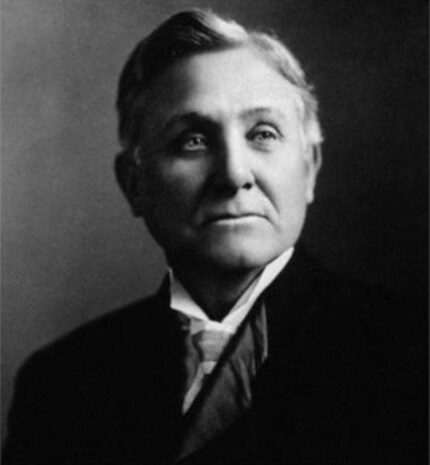
Asa Candler decides that Coca-Cola never contained cocaine. Against all fact.
Advertising campaigns are launched. The main message: Coca-Cola is healthy, was healthy, and remains healthy. In the following years, Asa Candler stated under oath that Coca-Cola never contained cocaine. Maybe he even believed it himself by now, Pendergrast suspects in his book.
In 1902, the US state of Georgia banned the sale of cocaine in any form.
Your average bottle of Coke doesn't contain cocaine. On the Swiss website of «The Coca-Cola Company», the word «cocaine» does not appear. The site has a lot to say about caffeine. Only the Gulf State site answers questions about cocaine with a strong «No».
Nevertheless: cocaine still exists. If you want, you can find a line of coke within ten minutes on Zurich's Langstrasse.
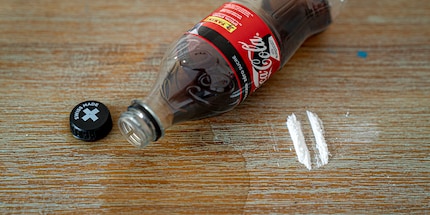
The market is monitored by saferparty, a governmental body of Zurich, which claims to provide neutral information about mind-altering substances. On the subject of cocaine, saferparty has its cocaine report for the first quarter of 2020:
The consumption of cocaine generally carries the risk of severe unhealthy side effects (sleep disorders, irritability, aggressiveness, anxiety and delusional states, depression, etc.) as well as a high risk of mental dependence!
The cocaine analysed by the Drug Information Centre (DIZ) in the first quarter of 2020 has an average active ingredient content of 79.3%. This is cocaine hydrochloride, a compound that releases hydrochloric acid when you snort it. Praxis Suchtmedizin rates an effective dose at 100 to 200 mg.
According to the original Coca-Cola recipe, prepared as Asa Candler had intended, a drinker would have consumed a regular modern dose of cocaine by ingesting 24 to 48 glasses of Coca-Cola. With four times the dosage, that would still be 6 to 12 glasses.
With all this data, we can continue to calculate. If we still had Coca-Cola according to the original recipe, including cocaine, we would have to drink at least 24 glasses of Coca-Cola to reach a dose of 100mg of cocaine. Or 48, if we want the 200 milligrams.
Historically, Coca-Cola has one of the most stable selling prices of any product. Between 1886 and 1959, a bottle of Coca-Cola cost 5¢, or $0.05. That's $1.20 for 100 milligrams of cocaine. For 200 milligrams, $2.40. That was then. When adjusting for inflation, the small amount of cocaine would cost $36.63. 200 milligrams would have a cocaine drinker pay $73.25. That would be CHF 35.52 or 71.04.
DIZ Zurich knows that one gram of cocaine with an average active ingredient content of 79.3% costs between 80 and 100 francs. This corresponds to a cocaine content of 793 mg. To get to 100 mg, you would have to pay CHF 10.09. Or CHF 20.18 for 200 mg. In this example, the cocaine is taken orally. The way Coca-Cola is consumed.
It is therefore cheaper to drink cocaine than to drink Coca-Cola according to the original recipe.
This has been the case historically. Coca-Cola was always more expensive than cocaine. Pendergrast writes in his book that the farmers who bought cocaine instead of real food for the Blacks on their farms bought a «weekly ration for 50¢». In Coca-Cola, this would correspond to 43 mg of cocaine per week, not even enough for an oral dose.
So if we need to find someone to blame for why we aren't allowed to get high from Coca-Cola anymore, it would have to be these White farmers. Or health-conscious individuals of the 20th century.
Even if Coca-Cola was still produced according to the original recipe, we would have to drink almost 50 glasses of cola for one dose. That's not worth it.
Bam. Done. Coca leaves, which are often chewed in South America, have little to do with cocaine, by the way. Cocaine is extracted from an alkaloid in the leaves. Nevertheless, the ancient cultural custom of coca leaf chewing is prohibited in many South American countries.
Journalist. Author. Hacker. A storyteller searching for boundaries, secrets and taboos – putting the world to paper. Not because I can but because I can’t not.
Interesting facts about products, behind-the-scenes looks at manufacturers and deep-dives on interesting people.
Show all